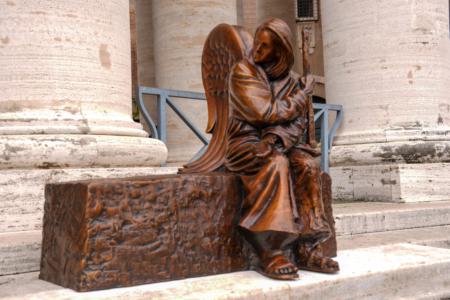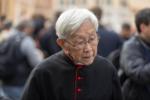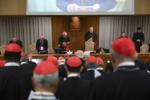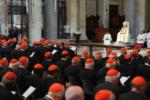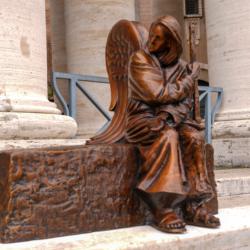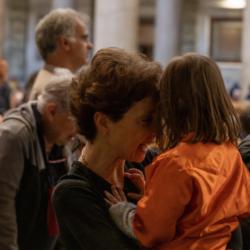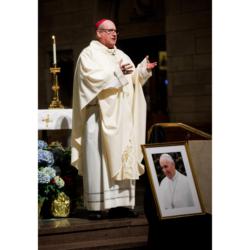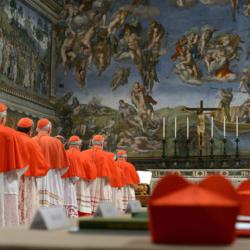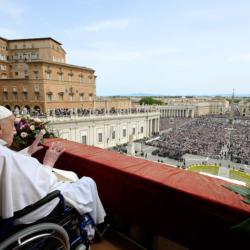History of Catholics on the Supreme Court
When President Bush announced early morning Sept. 5 that he would nominate Judge John Roberts to be the 17th chief justice of the United States he followed a long tradition of naming the chief justice from outside the Supreme Court’s sitting associate justices. Observers are predicting that Roberts will receive senate confirmation, and if this happens he would become the 10th Roman Catholic to sit on the highest court in the land.
The first Roman Catholic to serve on the Supreme Court was also the first Roman Catholic to be selected as chief justice: Roger B. Taney. Nominated in 1836 by Andrew “Old Hickory” Jackson he succeeded the “great chief justice” John Marshall. Taney was a Marylander and his term lasted 28 years (1836-1864), only Marshall had a longer term, 34 years (1801-1835). Their combined terms (62 years) account for well over 25 percent of the existence of the highest court in the nation.
One of the more notable decisions in Justice Taney’s time was the famous Dred Scott vs. Sanford decision of 1857. The decision removed legal barriers and permitted the expansion of slavery into the territory of the Louisiana Purchase and accelerated the nation towards the Civil War.
There was not another Roman Catholic justice appointed until Edward White was named by President Grover Cleveland in 1894. In 1898 President McKinley appointed Joseph McKenna from California as an associate justice and for the first time there was more than one Roman Catholic justice on the Supreme Court.
Only three chief justices have been “promoted from within.” Interestingly enough the very first to be so appointed was Edward White. President Taft appointed him in 1910 and he served until 1921. In a yet to be repeated twist of history Taft succeeded White as chief justice. According to some biographers, Taft wanted to be chief justice much more than he ever wanted to be president.
Chief Justice White died in office in 1921 and Justice McKenna retired in 1925. The next Roman Catholic appointed was Minnesota native Pierce Butler who, following his appointment by President Harding in 1923, served until 1939. Although it was brief, there were again two Catholics as sitting associate justices. President Franklin Roosevelt appointed Frank Murphy of Michigan to the bench in 1940 and he served until his death in 1949.
There was a hiatus between 1949 and 1956 when there was no Roman Catholic sitting on the highest court. President Eisenhower ended that hiatus with his appointment of Justice William Brennan in 1956. Brennan served until his retirement in 1990. The New Jersey native had one of the longest tenures on the court — 33 years. He died in 1997. Associate Justice Sherman Minton of Indiana, appointed in 1949 by President Truman, served until 1956. He converted to Catholicism after leaving the federal bench and he died in 1965.
While Justice Brennan was still on the bench another Roman Catholic, Antonin Scalia, was appointed in 1986 by President Reagan. Scalia was, like Brennan, a New Jersey native, though he was appointed from Washington, D.C.
For the first time in the Court’s history there were three Roman Catholics sitting on the top federal bench when President Reagan appointed a fellow Californian, Anthony Kennedy, in 1988. If Judge Roberts is confirmed, there will be four Roman Catholics sitting on the high court. Only the Protestant denomination, the Episcopal Church in the United States, has had more than four justices sitting at the same time.
When Justice Sandra O’Connor announced her intention to retire as an associate justice, President George Bush nominated Judge John Roberts to take O’Connor’s place. With the death of Chief Justice Rehnquist on Sept. 3, the president moved quickly and nominated Judge Roberts, who is also a Roman Catholic, to be Chief Justice of the U.S. Supreme Court.
If the Senate confirms the president’s choice, Judge Roberts will be the 17th chief justice of the United States. He will be the third Roman Catholic to hold that office and he will also follow the pattern of the chief justice being named from outside the sitting justices. The only chief justices nominated from among associate justices were Edward White (1910-1921); Harlan Stone (1941-1946) and William Rehnquist (1987-2005). Justice Charles Hughes left his associate’s seat on the Supreme Court in 1916 to run, unsuccessfully, for president. In 1930 President Hoover nominated him as chief justice. Although he had previously been an associate justice he was not a sitting justice when nominated by the president. Justice John Rutledge, one of the first members of the high court appointed in 1790 by President George Washington, served as an associate justice for a year. He resigned in 1791. Four years later in July 1795, Washington made a recess appointment of Rutledge as chief justice. He served for the August term but the senate refused to confirm him, rejecting his nomination in December 1795. Rutledge has the distinction of having the shortest term as chief justice.
If he is confirmed, Judge Roberts would become the third youngest chief justice. John Jay, the first chief justice, is the youngest to date. He was sworn in at 43 in October 1789 just two months shy of his 44th birthday. Next was the fourth and longest serving as well as the “great chief justice” John Marshall. When he took the bench at 45 in February 1801 he was seven months short of his 46th birthday. Judge Roberts turned 50 in January of this year, so if he is confirmed and sworn in before the early October start of the judicial term, he’ll unseat Oliver Ellsworth of Connecticut from the third youngest’s slot by a few months. The oldest chief justice appointed was Harlan Stone from New York appointed at age 69 in 1941.
[Editor’s note: Further information on the court is available at www.oyez.org, an ongoing project filled with information about the courts, procedures, history and the justices; and www.supremecourtus.gov, the official Web site of the U.S. Supreme Court.].
